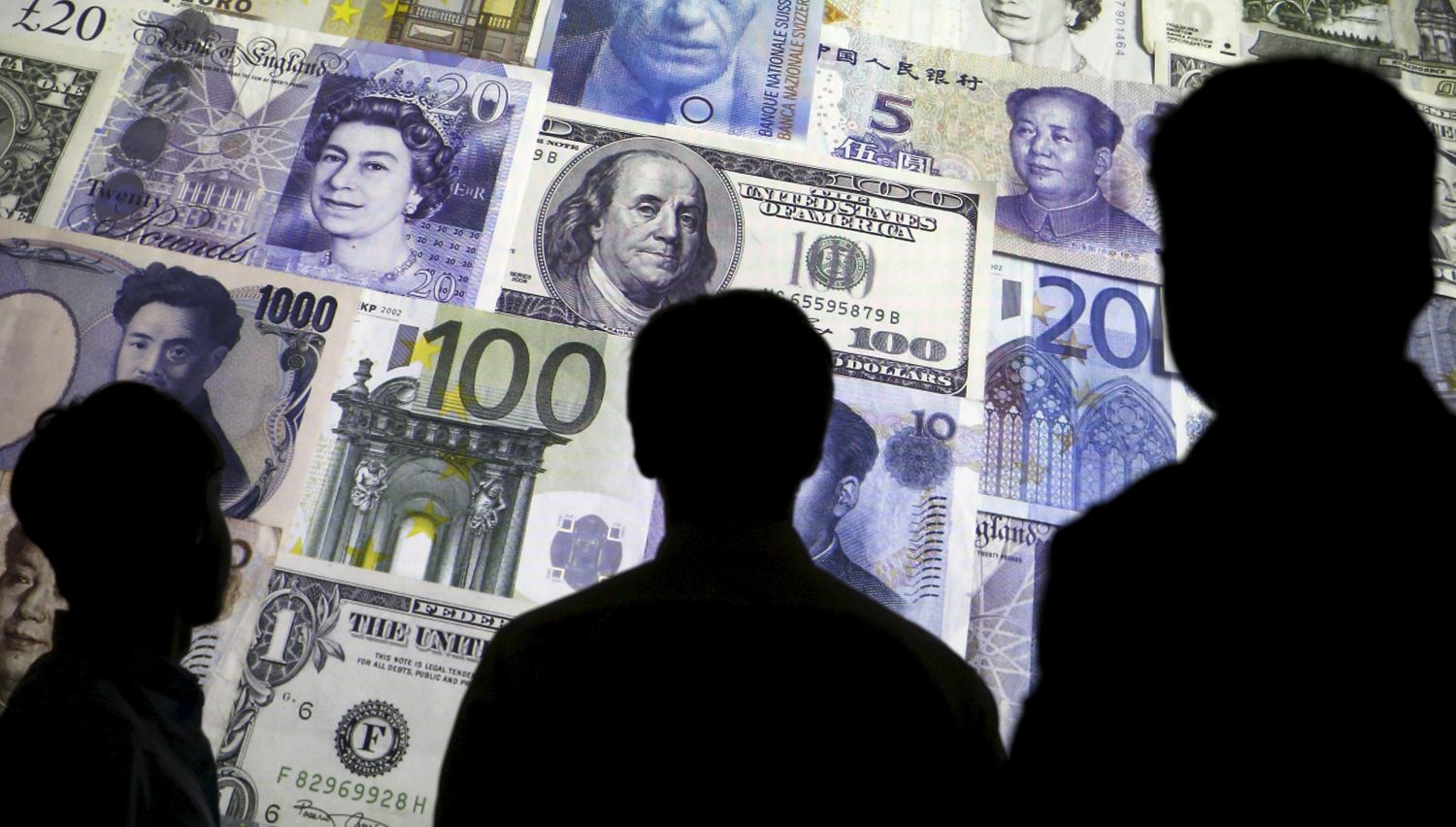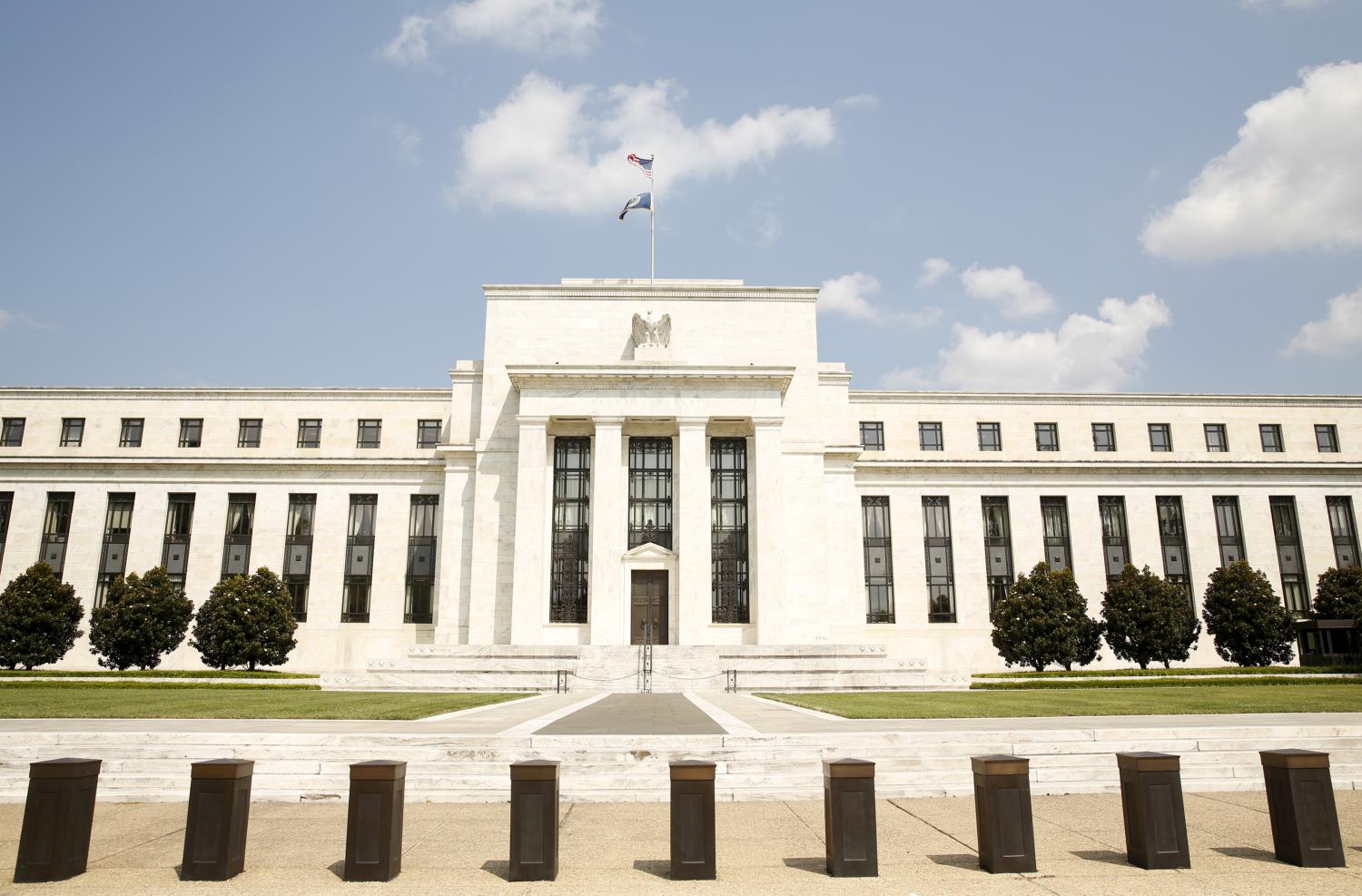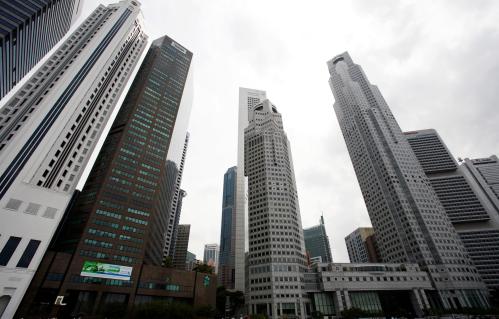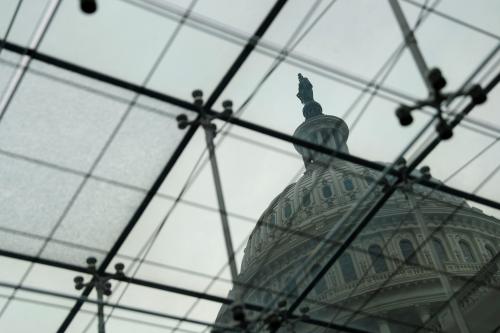An earlier version of this paper was posted on August 17, 2018.
Loose financial conditions that increase GDP growth in the near-term may come with a tradeoff for higher risks to future economic growth, according to a new paper from Brookings Senior Fellow Nellie Liang, and Tobias Adrian, Federico Grinberg, and Sheheryar Malik from the International Monetary Fund. The authors study 11 advanced economies to develop a model of GDP growth-at-risk (GaR)—that is, expected growth in the lower tail of its distribution. They demonstrate that financial conditions affect the entire distribution of expected growth, with larger effects for downside tail risks than for the median or upside risks. In contrast, most previous research has emphasized the importance of financial conditions for just expected growth, not the distributions (see, for example Liang et al. (2017)).
Looser financial conditions can stimulate growth in the near-term by increasing net worth and easing constraints on borrowers. But the analysis suggests there is an inter-temporal tradeoff: easy financial conditions that increase higher growth in the near term also increase the likelihood of a significant slowdown or even recession in the medium-term. This tradeoff is amplified when there is a credit boom. Moreover, greater downside risks to growth are not counterbalanced by higher expected growth. Financial conditions combined with high credit growth further skews the distribution of future GDP growth to the downside, more than offsetting the benefit of higher expected near-term growth.
The analysis has important applications for researchers and policymakers alike.
As the authors note, many macroeconomic models that are important for policymaking (including dynamic stochastic general equilibrium or DSGE models) rely on assumptions that the distributions of variables like GDP growth are constant across model states (certainty equivalence). In contrast, the authors demonstrate that factors including financial conditions and credit growth could disproportionately affect the range of growth outcomes in these models. Models that ignore these nonlinear effects could lead policymakers to underestimate downside risks to growth.
Adrian, Grinberg, Liang, and Malik express financial stability risks in a common metric that could be used for both macroprudential policy and monetary policy. Macroprudential policies could be increased to enhance the resilience of the financial system when current financial conditions and credit signal high future downside risks. Monetary policy could incorporate future downside risks to growth from current policy. Being able to express risks arising from financial developments in common terms will help to improve consultation and coordination, and ultimately improve macro-stabilization policies.
Read the full paper here.
The authors did not receive financial support from any firm or person for this article or from any firm or person with a financial or political interest in this article. Neither is currently an officer, director, or board member of any organization with an interest in this article.
The Brookings Institution is committed to quality, independence, and impact.
We are supported by a diverse array of funders. In line with our values and policies, each Brookings publication represents the sole views of its author(s).








